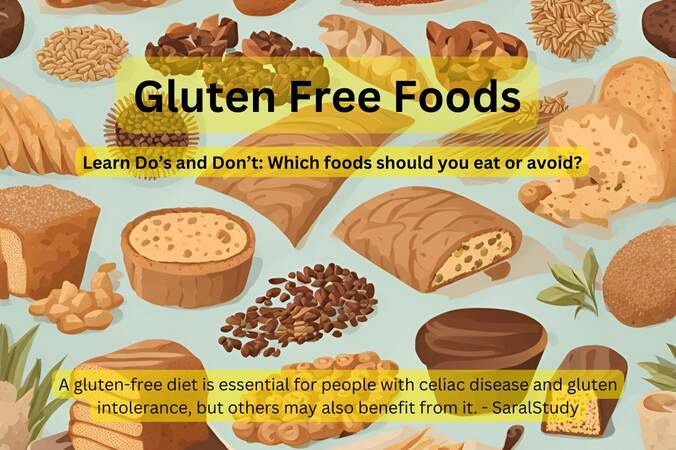The gluten-free diet has gained immense popularity in recent years. While it is essential for those with celiac disease and gluten sensitivity, many others follow it for health and digestive benefits. But what exactly is a gluten free diet? Which foods should you eat or avoid? And does it really offer health benefits? Let’s explore everything you need to know about this diet.
What is Gluten?
Gluten is a protein complex found in Wheat, Barley, Rye and Triticale (a hybrid of wheat and rye). It acts as a binding agent, giving elasticity to bread and other baked goods.
Who Should Follow a Gluten-Free Diet?
A gluten-free diet is not just a trend; it is a medical necessity for certain individuals:
- People with Celiac Disease – An autoimmune disorder where consuming gluten damages the small intestine. Even a tiny amount of gluten can cause severe harm.
- Individuals with Gluten Sensitivity – Some people experience bloating, fatigue, and digestive discomfort after consuming gluten, despite not having celiac disease.
- Those with Wheat Allergy – Involves an allergic reaction to proteins found in wheat, including gluten.
- People with Certain Neurological Disorders – Some research suggests gluten may contribute to conditions like autism and epilepsy in sensitive individuals.
Hidden Sources of Gluten
If you’re following a gluten-free diet, beware of these foods:
❌ Grains & Breads
- Wheat (atta, maida, semolina, daliya)
- Barley and rye
- Most breads, pasta, pizza, and baked goods
❌ Processed & Packaged Foods
- Instant soups, sauces, and gravies
- Beer and malt beverages
- Soy sauce (contains wheat)
❌ Snacks & Fast Foods
- Fried foods (often coated in flour)
- Packaged chips and crackers
Gluten-Free Foods: What You Can Eat
A gluten-free diet includes natural and wholesome foods such as:
✅ Grains & Flours (Naturally Gluten-Free)
- Rice (white, brown, red, black)
- Corn
- Quinoa
- Millet
- Buckwheat
- Amaranth
- Sorghum
- Almond flour, coconut flour, chickpea flour
✅ Fruits & Vegetables
- Apples, bananas, oranges
- Spinach, carrots, cucumbers
- Sweet potatoes, pumpkin
✅ Protein Sources
- Eggs
- Fresh meat, poultry, fish
- Lentils, chickpeas, beans
✅ Dairy Products
- Milk, cheese, yogurt
- Butter, ghee
✅ Healthy Fats
- Olive oil, coconut oil, avocado oil
- Nuts and seeds
Tips For Gluten-free Foods: Do’s and Don’ts
Here’s a checklist of do’s and don’ts for people who are looking for a gluten free diet.
- Red Flag Ingredients: While buying groceries from the general store, go through the ingredients section. Avoid products that include ingredients such as ‘malt’ and ‘hydrolyzed vegetable protein’.
- Avoid breads: Avoid white, wheat, marble and rye breads. Say goodbye to bagel, croissants, muffins, pizzas, buns and scones. However, you can find gluten free substitutes for these items these days at the general store. The products are usually made of rice or potato flour and can be eaten by celiac disease patients.
- Choose your cereal carefully: Most cereals are made of wheat and hence are not suitable for people on a gluten free diet. Check the ingredients panel and avoid cereals that contain wheat or its derivatives. You can substitute your morning meal with corn and rice cereal which are filling as well as nutritious.
- Say no to Pasta: Whichever form or shape it is in, pasta cannot be consumed by people on a gluten-free diet. Switch to a diet of rice and potato instead as it is filling and nutritious.
- Quit Beer: Most beers are prepared from barley malt. This can be harmful for those on a gluten free diet. Switch to wine to still celebrate with a toast when you have to.
Final Thoughts
A gluten-free diet is essential for people with celiac disease and gluten intolerance, but others may also benefit from it. By focusing on whole, natural foods and avoiding gluten-containing products, you can improve digestion, reduce inflammation, and maintain overall well-being.
Would you like more personalized gluten-free meal plans and recipes? Let us know in the comments!
Also Read: Healthy Eating Slogans For Kids

